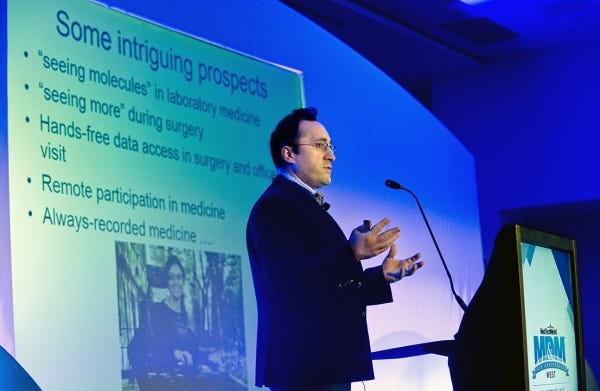Why Google's Robots Could Drive New Surgical Possibilities
December 17, 2015
Johnson & Johnson and Alphabet Inc.'s new life sciences division, Verily Inc., have launched a new company to develop smaller and less expensive surgical robots.
Nancy Crotti
|
While Google has made a name for itself recently for innovating in the field of self-driving cars, the company, through a new subsidiary, "aims to develop a comprehensive surgical solutions platform that will incorporate leading-edge robotic capabilities and best-in-class medical device technology for operating room professionals," according to a statement announcing the formation of the firm Verb Surgical.
The entity has the support of J&J's surgical technology division, Ethicon, which joined Verily in investing in the new company and contributing intellectual property, in-process R&D assets, and other, unspecified resources.
Verb Surgical, like its parent, will be headquartered in Mountain View, CA. It will be led by CEO Scott Huennekens, former chief executive of medical imaging company Volcano Corp., a developer and manufacturer of precision-guided therapy tools for coronary and peripheral vascular disease. Pablo Garcia Kilroy, late of SRI International, will lead Verb's medical robotic research.
Verb's robot could be roughly 20% of the size of market leader's Intuitive Surgical, enabling doctors to be placed closer to patients than Intuitive's da Vinci robot, which can cost $2 million.
Although he's not among Verb's executives, former Google X leader Babak Parviz, PhD, claims to have planted the idea of an autonomous surgical robot when he joined Google in 2010 to innovate both Google Glass and the company's glucose-sensing contact lens. Parviz (pictured above) delivered a keynote address at MD&M West, in Anaheim, CA in February.
Parviz ultimately left Google for Amazon. Google X became Verily. Verily begat Verb, and Verb's stated goal is to develop its surgical robotic technologies "in partnership with surgeons and hospitals to enable better patient outcomes, improve access to minimally invasive surgery, and achieve greater hospital efficiency." Invoking Star Trek, Google wants to boldly go where no surgeon has gone before, using robots to offer surgical options and dexterity that had previously been impossible with humans or other robots.
Parviz told Backchannel that autonomous surgical robots could take surgery where the human hand has been unable to go before, at least not without the attendant human error. These robot surgeons could conduct much quicker surgeries with smaller, safer incisions, bending and rotating in ways humans wrists cannot. They might also make surgery more accessible to the poor, Parviz said.
Specifics on what Verb Surgical will come up with will have to wait. This spinoff is upholding Google X's tradition of keeping secrets.
Hear from Amazon vice president Babak Parviz in a keynote at MD&M West, held February 10-12, 2015 in Anaheim, CA. |
Brian Buntz is the editor-in-chief of MPMN and Qmed. Follow him on Twitter at @brian_buntz.
About the Author(s)
You May Also Like



